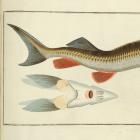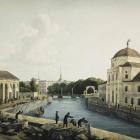About the Exhibition
This exhibition shows some of the many links between the Neva River in St. Petersburg and the Viennese Danube discovered during the joint Russian-Austrian research project “The Long-Term Dynamics of Fish Populations and Ecosystems of European Rivers.”











